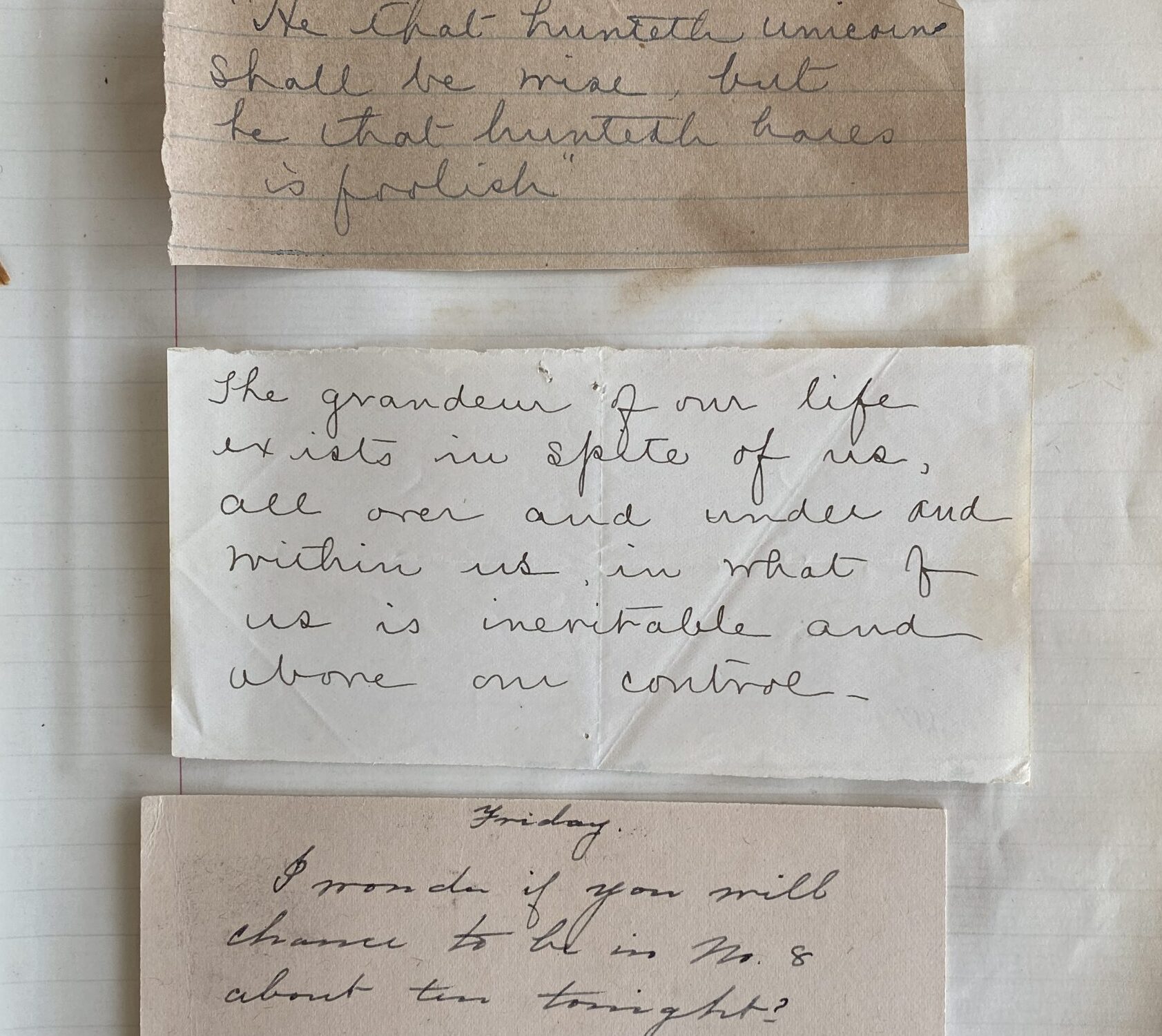Diary-Keeping as a Method of Identity Formation
Keeping records of one’s life was an extremely common practice for young women of the late 19th and early 20th centuries. Daily journaling in a diary was thought of as an important tool for the refinement of the self and adherence to social expectations. However, as records like those included in this project show, young women of this time often used their diaries to discover their own identities instead of rigidly conforming to parental or societal standards that they were expected to uphold.1
Countless Smith students from this time period kept diaries, but the one that I explore most in this project is from Mary Askew Mather, Class of 1883. Click here to learn more about Mather and the ways in which she documented her desires toward a Smith friend in her diaries and memorabilia books.
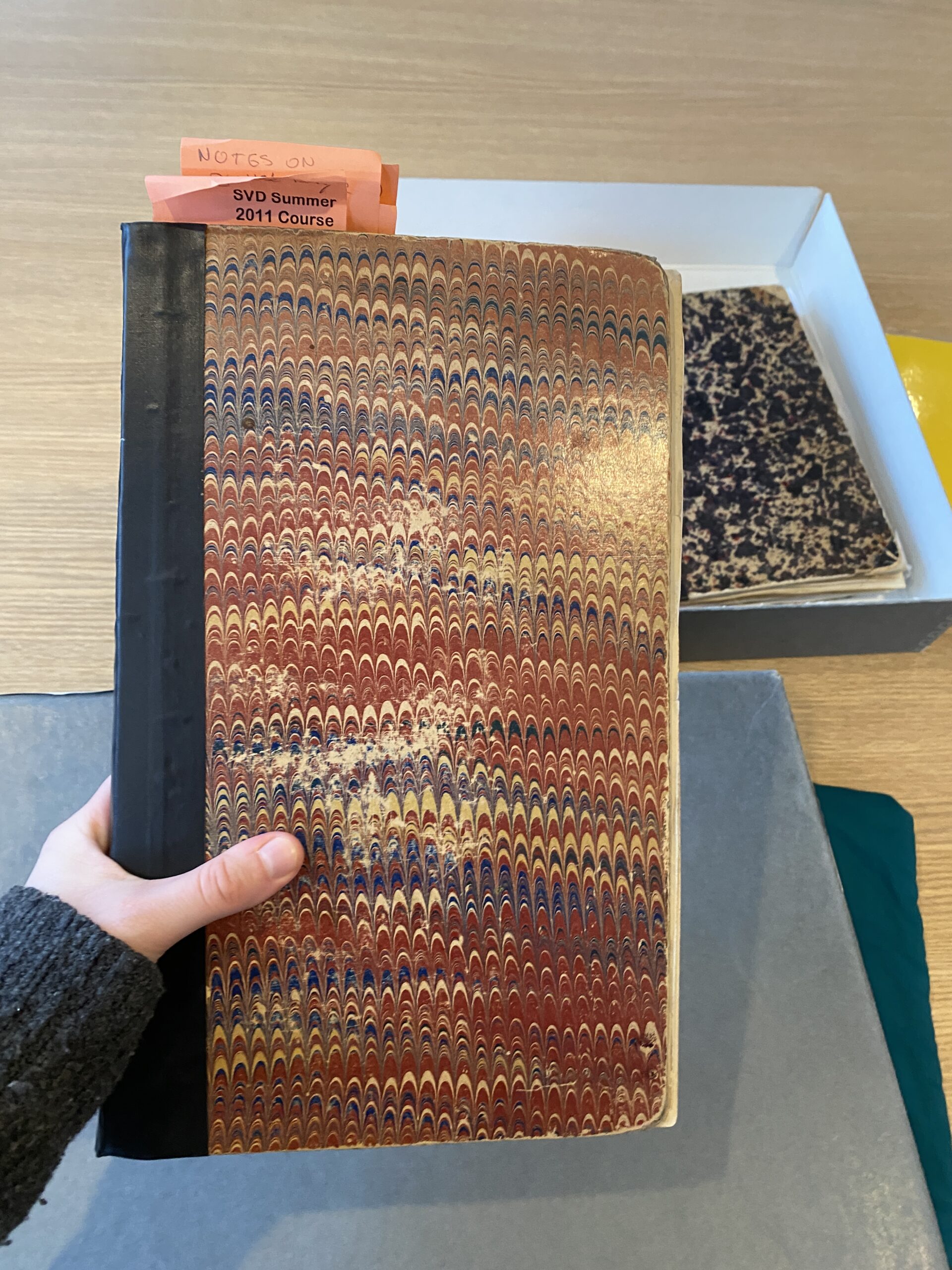
Memorabilia Books
Memorabilia books, also dubbed “mem books” were essentially scrapbooks that girls and young women in the 19th and 20th centuries used to document their daily lives in a more visual format. Keeping memorabilia books was an extremely common practice at Smith, and students detailed their time in college visually–through photographs, pressed flowers, locks of hair, programs from plays and other campus events, notes from friends or admirers, class notes, and much more.
In this project, I explore the mem books of Mary Mather, Class of 1883, Elizabeth Rusk, Class of 1916, and Ruth Hawthorne French, Class of 1902, and the ways in which they frequently documented both their queer desires and expressions of queer life on Smith’s campus around the turn of the 20th century.
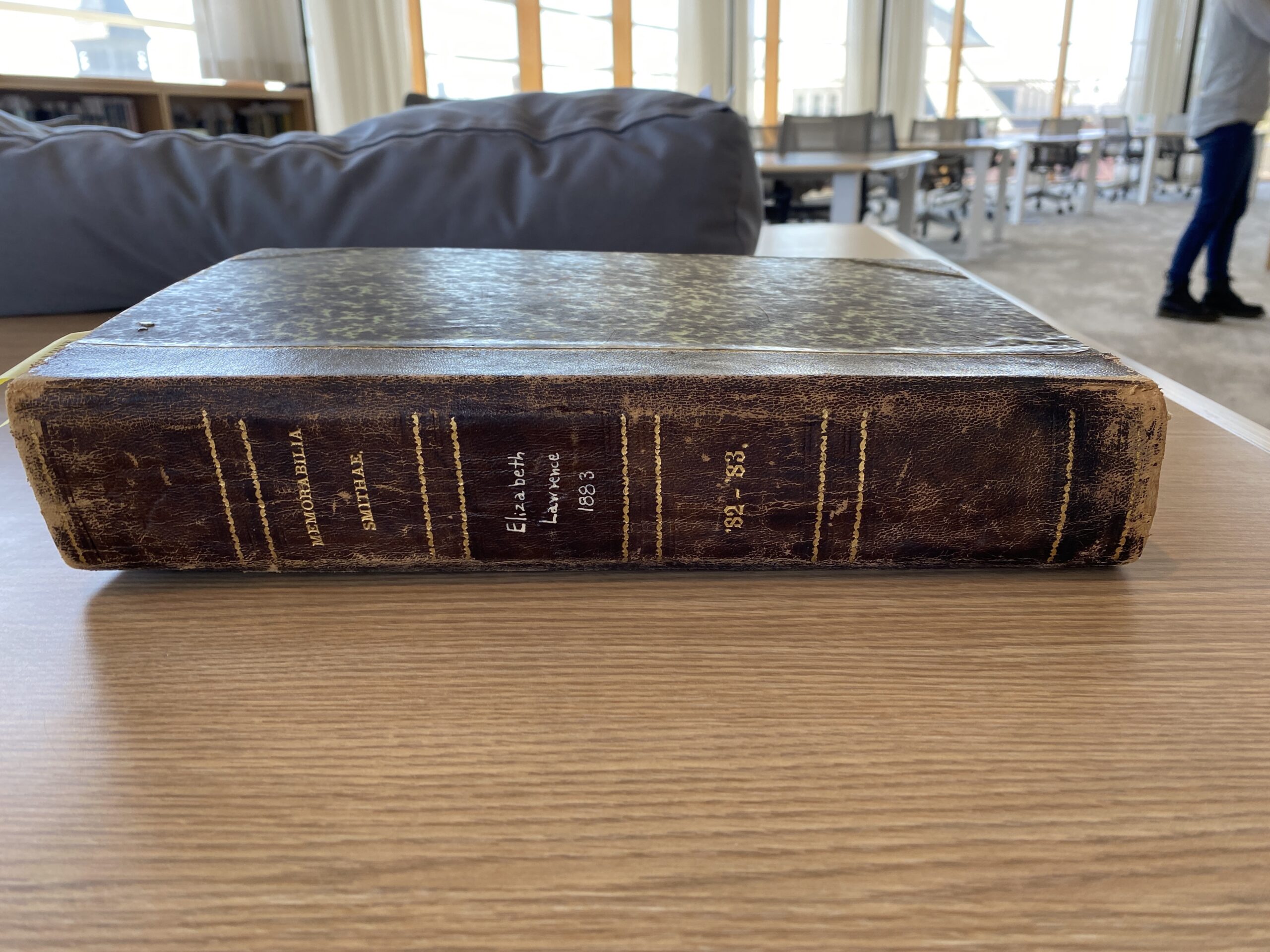
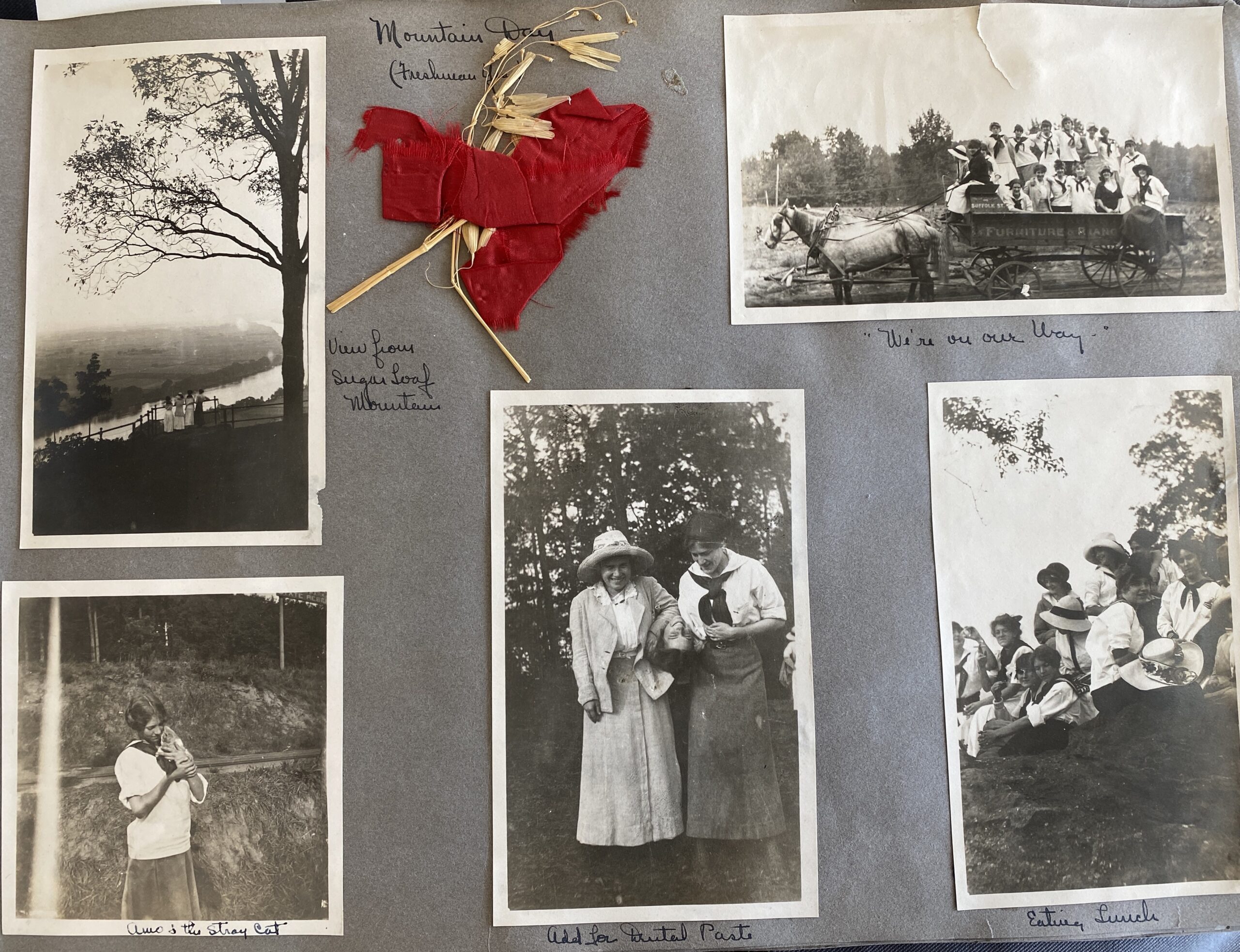
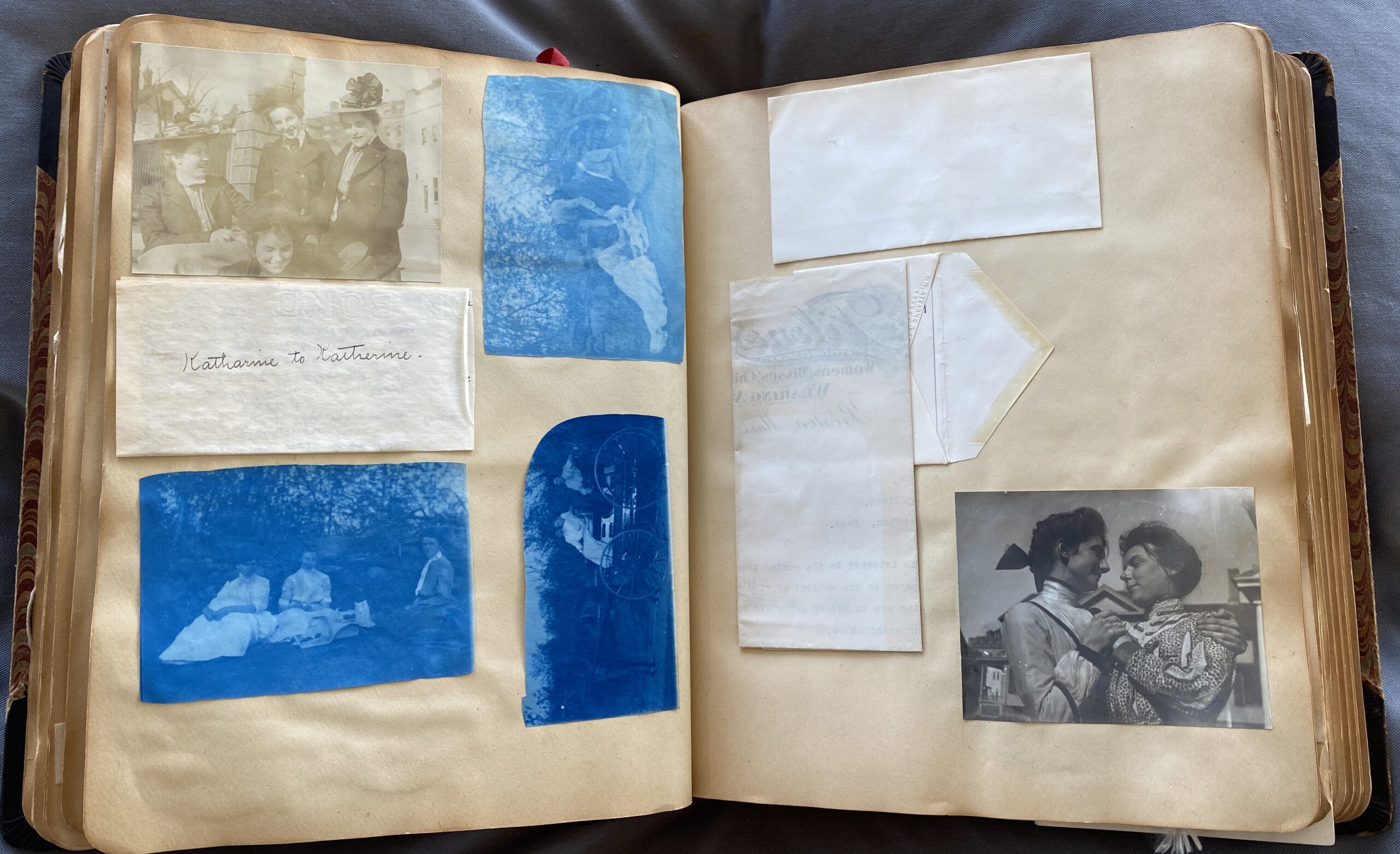
Letter Writing
In an age before telephones, the Internet, and other modern forms of communication, letter writing was also a very common practice by Smith students. Students would write frequently to their friends (such as Eleanor Larrison, Class of 1882), or to their families about their daily lives, struggles, hopes, dreams, and experience at Smith (such as Eleanor Little, Class of 1907).
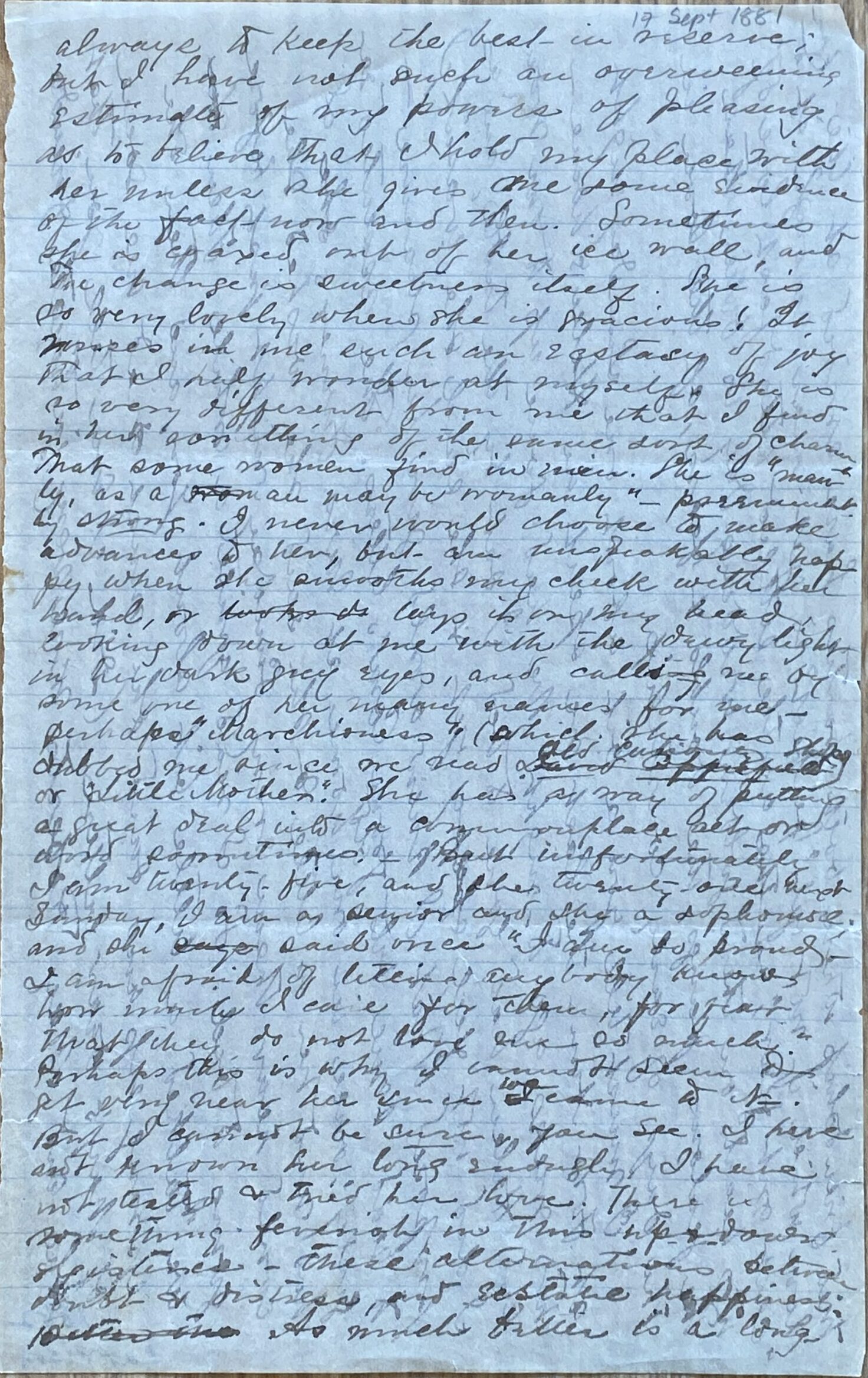
References
- Jane H. Hunter “Inscribing the Self in the Heart of the Family: Diaries and Girlhood in Late-Victorian America.” American Quarterly 44, no. 1 (1992): 51-54. https://doi.org/10.2307/2713180.
- Exterior of Mary Mather’s diary, January-June 1882, CA-MS-01023, Box 1413.1, Classes of 1879-1890 records, Smith College Archives, Northampton, Massachusetts.
- Exterior of Elizabeth Crocker Lawrence’s memorabilia book, 1882-1883, CA-MS-00393, Box 1411, Elizabeth Crocker Lawrence papers, Smith College Archives, Northampton, Massachusetts.
- Page from Elizabeth Katharine Rusk’s memorabilia book, Early 20th Century, CA-MS-01018, Box 1894.7, Classes of 1911-1920 records, Smith College Archives, Northampton, Massachusetts.
- Page from Ruth Hawthorne French’s memorabilia book, Early 20th Century, CA-MS-01020, Box 1624, Classes of 1901-1910 records, Smith College Archives, Northampton, Massachusetts.
- Correspondence from Eleanor Larrison to Cora Potter, 25 September 1881, CA-MS-01023, Box 1397, Classes of 1879-1890 records, Smith College Archives, Northampton, Massachusetts.
